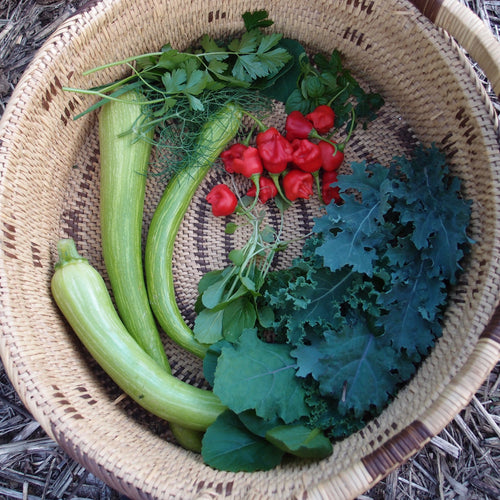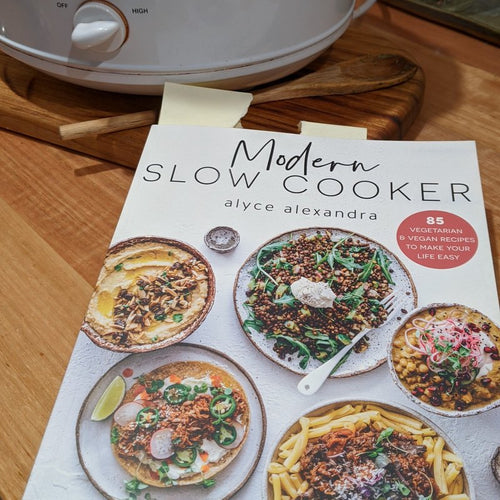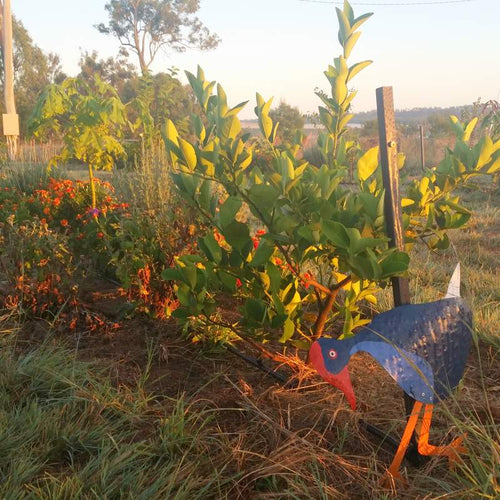Growing food in the sub-tropics - the vege garden
As I’ve written previously, its taken me a while to get accustomed to our climate and figure out what to grow and when. Part of the problem is that we are just on the edge of a climate zone, we are in the humid sub-tropics, but as we are around 500 m above sea level, we experience cool overnight temperatures, particularly in winter. We are also 200 km inland, so our rainfall is not as regular as coastal areas. I'm slowly realising that, despite the confusion, we are in the best possible climate. We have cool winters, so we can grow temperate plants, and with out hot humid summers we can also grow tropical plants, as long as we can protect them from frost through winter. In this climate, many annuals can be grown as perennials (I have been picking from the same kale "bush" for 12 months now). There are very few things that we can't grow at all, and although our climate is probably not ideal for anything much, we are just on the edge of possible for so many food plants, we have a wealth of opportunities if we can work to create micro-climates.
What is a sub-tropical climate?
According to Wikipedia:
The Köppen definition of this climate [humid sub-tropical] is for the coldest month's mean temperature to be between −3degC and 18degC, and the warmest month to be above 22degC…… It is either accompanied with a dry winter (cwa) — or has no distinguished dry season (cfa).
Significant amounts of precipitation occur in all seasons in most areas, and though in regions bordering on semi-arid climates (usually at the western margins), irregular droughts can be common and catastrophic to agriculture. Winter rainfall (and sometimes snowfall) is associated with large storms that the westerlies steer from west to east. Most summer rainfall occurs during thunderstorms and an occasional tropical storm, hurricane or cyclone.
I like the Koppen climate clasification because its based on vegetation, and that's what I'm interested in. This definition of the sub-tropical climate describes our climate exactly. Our coldest month (July), historically has a mean temperature of 11degC, we experience warm days (high 20degC) and frosts overnight. The warmest month (January) historically has a mean temperature of 24degC, with hot days and cool nights. Rainfall is distributed throughout the year, with slightly more rain in summer, but technically there is not enough difference to call it a wet season. We don’t really have a distinguishable spring or autumn, for a few weeks the temperatures will swing between hot and cold, and then suddenly the season has changed! We are on the edge of the semi-arid zone and can experience droughts lasting several months, at any time of the year. Most of the warm season rain is either sporadic afternoon storms or cyclones (which results in large amounts of rain over a short time period).
The BOM has refined the Koppen system further to suit Australian conditions, in the map below you can try to figure out what colour zone your property is in, or you can calculate it from climate data (yes, I calculated it, just to be sure, because all the shades of light-green looked the same to me, we are definitely sub-tropical with no distinct dry season). You can find the calculations here, if you want some help to understand it, please let me know which climate to translate for you, and maybe also email the BOM and tell them that it would be nice if they made this information available in a format that could be understood by everyone and not just those who have studied mathematical programming!
 |
| Climate map from here |
One of the challenges of growing food in our part of the sub-tropics is the temperature extremes. You need to plan for both a hot and humid summer and a cold winter. In the summer months, shade and moisture retention are essential. Shade can be achieved both with permanent structures, such as shade cloth or large trees, or more temporary methods, like growing climbing plants up a northern trellis to shade the garden. I have shade cloth covering the entire garden, which is probably more than is really necessary and can make my garden too shady in winter. I also use climbing plants like beans and tromboncino to provide extra summer shade. Water retention is improved by building soil organic matter using compost and mulch. Mulch on top of the soil also helps to prevent evaporation. I water the garden every few days with our grey water, but nothing compares to a good fall of rain from a summer storm.
In winter we get frost. In total we only actually have about 20 frost days per year, but you only need one heavy frost to kill anything and everything that is frost tender. The shade cloth helps to some extent, and I have a small greenhouse to protect tree sapplings that I've started, but my best solution to frost is to just grow frost-hardy plants over winter. Fortunately this includes plants that I can't grow in summer at all, due to bugs, this includes carrots, broccoli and cabbage. They all do much better in winter in the sub-tropics.
Crop rotation is a another challenge in a sub-tropical garden where you can grow something all year round. There is little opportunity for cover crops or a winter fallow, unless one garden bed is to be sacrificed for an entire season, and I don't have the space for that! This just adds a little extra complexity to garden planning, and I at least try to move the tomatoes and broad beans around each year.
The change of season can also be tricky. I still have cherry tomatoes in the garden in June, which is officially winter, but it hasn't got cold enough yet to kill them. Meanwhile, I'm trying to make room for winter crops, which will have a short season as it is, because I can start summer again in September (or earlier in my greenhouse)! The solution is a bigger garden I think!
Veges that grow well in a sub-tropical winter season (with frost)
- brassicas - all asian greens, broccoli, cabbage
- root veges - turnip, swede, carrots, radish
- onions and leeks
- broad beans
- garlic
- tomatoes
- curcubits, but watch out for powdering mildew from the humidity - tromboncino, squash, pumpkin, melons
- beans
- corn
- capsicum and chillies
- eggplant
- ginger and tumeric
- arrowroot and comfrey
- basil
- potatoes
- peas seems to be best in the in-between season
- tomatoes sometimes do better after the summer bugs die off
Veges that grow well in all year in a sub-tropical climate
- kale
- parsley
- lettuce
- strawberries
What do you think? Do you have a tricky climate? How do you handle it? What other veges should I try?

























Leave a comment